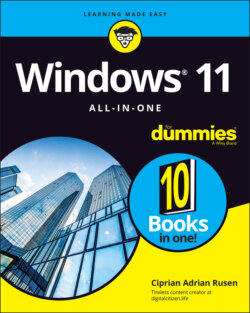Читать книгу Windows 11 All-in-One For Dummies - Ciprian Adrian Rusen - Страница 24
SOLID-STATE DRIVES HAVE PROBLEMS, TOO
ОглавлениеAlthough I love my SSD system drives and would never go back to rotating hard disk drives (HDDs), SSDs aren’t perfect. First, they don’t have any moving parts, and it looks like they’re more reliable than HDDs. But when an HDD starts to go belly up, you can usually tell: whirring and gnashing, whining and groaning. Expiring SSDs don’t give off advanced warning signals or sounds. When an HDD dies, you can frequently get the data back, although it can be expensive and time-consuming. When an SSD goes, you rarely get a second chance.
SSDs must take care of lots of internal bookkeeping, both for trimming unused space and for load balancing to guarantee uniform wear patterns. Trimming is the process in which the operating system tells the SSD which data blocks are no longer needed and can be deleted, or are marked as free for rewriting. SSDs slow down after you’ve used them for a few months or years. The speed decrease is usually associated with the bookkeeping programs kicking in over time.
What about USB 3? If you have a hard drive that sits outside your computer — an external drive — or a USB drive, it’ll run faster if it’s designed for USB 3 and attached to a USB 3 connector. Expect performance with USB 3 that’s three to five times as fast as USB 2. For most other outside devices, USB 3 is overkill, and USB 2 works just as well.
This list is by no means definitive: New storage options come out every day.
